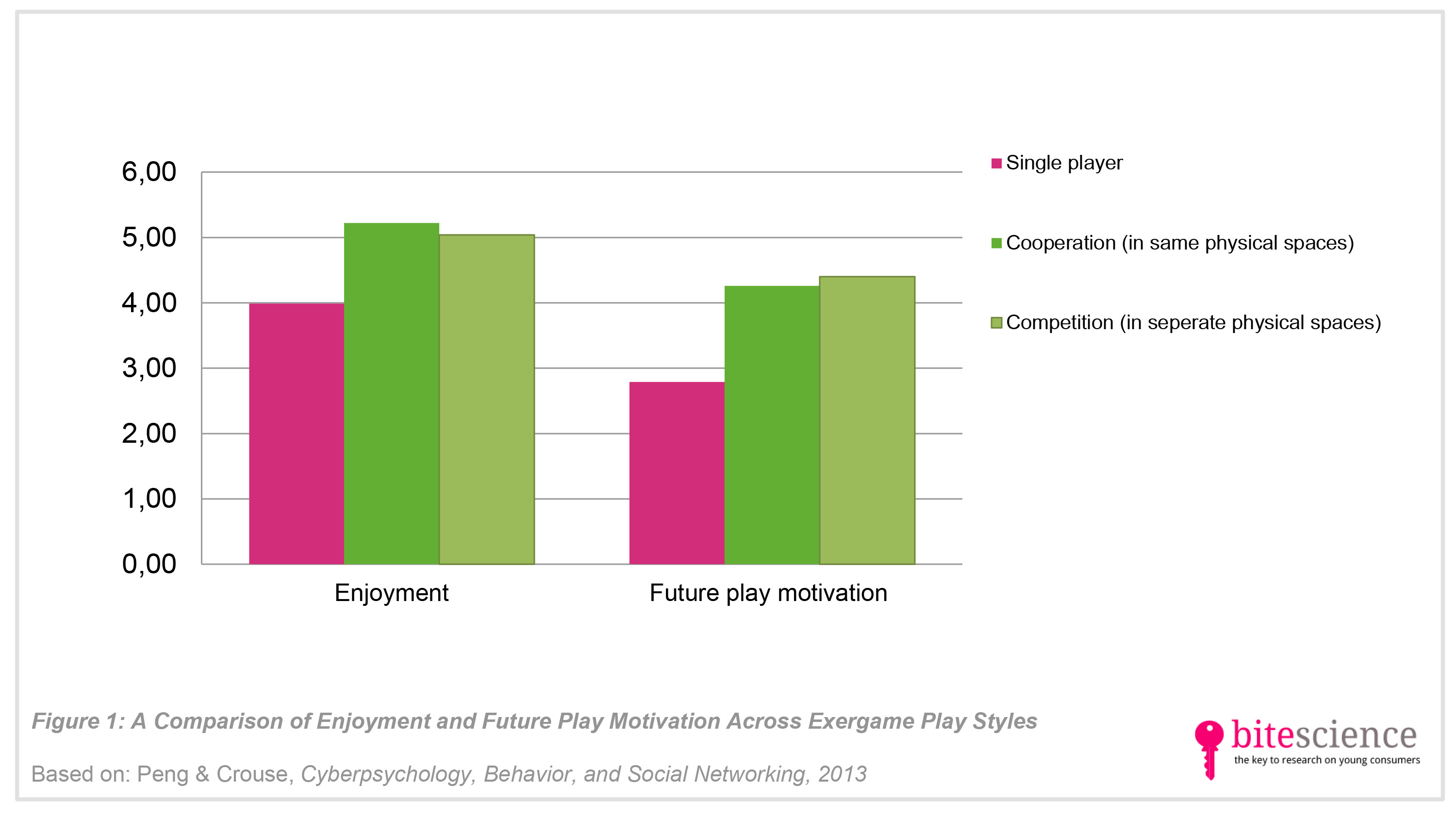
13 February 2014
Playing With Others Makes Exergames More Fun And Successful
Keywords: games, North America, experiment, gaming, health, technology, television, young adults,
Active video games or ‘exergames’ try to stimulate young people’s active lifestyles by combining technology with the fun of gaming. Previous research already emphasized the importance of (online) sport buddies for the effectiveness of exergames. This study in Cyberpsychology, Behavior, and Social Networking, shows that playing together with others is an important success factor as well, because it stimulates young adults’ game enjoyment and motivation to play.
Take aways
- Previous research shows that the presence of online sport buddies is beneficial for young adults’ exergame play.
- This study shows that playing together with others (either in cooperation with someone in the same physical space or in competition with someone in a different physical space) increases young adults’ exergame enjoyment and play motivation as well.
- However, competing against each other in separate physical spaces seems to stimulate players’ physical activity more than cooperation in the same physical space.
- Therefore, it seems beneficial for exergame developers to implement an online competition component in their games where players are able to compete against each other in different physical spaces, as this seems to increase exergame enjoyment, future play motivation, and physical effort.
Study information
The question?
Does playing exergames together with others (in the same or different physical space) increase exergame success among young adults in terms of enjoyment, motivation to play the game in the future, and physical activity level?Who?
152 students from a communication class at a large Midwestern University (63% were men; mean age: 19 years old)Where?
United StatesHow?
First, all participants played the exergame ‘Space Pop’ (part of X-Box’s Kinect Adventures). In this game players had to pop soap bubbles. Movements were tracked via the Kinect motion camera.
After they all individually played the exergame once, researchers divided the participants into three different groups. In the first group they played the same exergame individually again, in the second group they played the same exergame but this time they cooperated with another person who was present in the same room (to beat their individual scores together), and in the third group they competed with another person who was in another room (to beat each other).
Young adults’ enjoyment of the game was measured via a questionnaire, just as their motivation to play the game in the future. Their physical effort during the game was measured with an accelerometer that tracked players’ activity.
Facts and findings
- Playing exergames together with someone else (either in cooperation with someone in the same room or in competition with someone in another room) increases young adults’ enjoyment of the game and their motivation to play the game again:
- Young adults who replayed the exergame in cooperation or in competition with each other, enjoyed the exergame more than those who replayed the game individually.
- Those who replayed the exergame in cooperation or in competition with each other, were more motivated to play the game in the future than those who replayed the game individually (see Figure 1).
- Single players showed just as much physical effort as those who played the game in competition with each other in different rooms, while those who played the game in cooperation with someone in the same room showed less physical effort.
- A possible explanation is that players felt less free to move when they were together with another person in the same physical space, and therefore were less physical active.
- In sum, the most beneficial play mode seemed to be the one where young adults competed with one another in different spaces, since this positively affected their enjoyment, future play motivation, and physical effort.
- Critical note: It remains unknown whether young adults who played the exergame together with others in the same space were less active because of the limited physical space they had during game play or because of the cooperative character (instead of competitive) of the game.
